-
Posts
25.684 -
Joined
-
Days Won
299
Posts posted by Lion.Kanzen
-
-
5 minutes ago, BreakfastBurrito_007 said:
Yes these are indeed great inaccuracies, and I think it is reasonable to have asymmetry in the capabilities of different factions
for the second phase the idea would be to break the balance of power.
You stop to think what line of development to follow to destroy your enemy.
8 minutes ago, BreakfastBurrito_007 said:think this is a problem that can be reduced with the addition blacksmith upgrades like the "unit perks" I mentioned above, or civ specific upgrades like archery tradition, or "hoplite tradition" or "sword tradition" that people have suggested.
It actually works well to avoid overwhelming Mauryan might.
9 minutes ago, BreakfastBurrito_007 said:Another civ differentiation method to consider is to give different units from the same template different stats
By geographical area due to the style of troops.
-
-
Cavalry
Iberian peninsular cavalry was particularly renowned. Chronicles continually extol Spanish horses, describing them as fast, strong and well tamed. They were accustomed to climb mountainous roads, easily leaving behind their Italic homologues, and were also taught to obey their owners and wait for them if dismounted in midst of the battlefield. This was a custom of Ilergete and Celtiberian cavalrymen, as they often dismounted to fight on their feet at a possible tactical necessity, relegating their mounts as ways to retreat quickly.[2] Another tactic favored in Hispania saw riders carrying a second warrior in their horses, who they would deploy to form contingents of footsoldiers before extracting them from the battlefield the same way.[2] Others would use shock troops tactics, wearing armor and wielding spears and heavy shields.[6]
Spanish horsemen worked as mercenaries first by Carthage and later by Rome. During the Second Punic War, riders from Celtiberia, Lusitania and Vettonia were used by Hannibal as heavy cavalry, in stark contrast to the more famed Numidian skirmishing cavalry.[6] Livy compared them favorably against the Numidians, stating that Spanish riders were "their equals in speed and their superiors in strength and daring".[9] Among them is mentioned a unit from the Celtiberian city of Uxama, whose riders wore helmets with jaws of beasts to scare their enemies away.[10] Due to their performance at the battles of Trebia and Cannae, Livy would even state that Hispanic cavalry was superior to any other in the war.[2][4] This eventually led the Roman military to ask for their own horsemen to the Celtiberian cities under their domain, using them to counter their Carthaginian homologues and exerting psychological warfare on them.[11]
After the Punic Wars and the Roman conquest of Hispania, Roman military acquired peninsular horses and riders as auxiliaries. Particularly famous examples are found in the late alae quinquagenaria, which contained three Astur Ala Asturum forces, two Arevaci Ala Arevacorum and a famed Vetton contingent named Ala Hispanorum Vettonum.
-
the truth is that the game lacks technologies and especially for the blacksmith/armory.
Considering the regions, the type of weapons, the diversity of materials and shapes, ranging from leather to iron, and even wood.
not all shields look alike Those that are of the scutum family cannot be compared to a caetra.
Nor are leather and padded armor like lorica segmentata o to scale armor.
The Gladius, the falcata type (kopis) do not look like the 2-handed Dacians falxs.
We literally have soldiers going bare-chested against units wearing maniqueras.
A Maurya spearman cannot compete with a Spartan Hoplite.
-
Necesito ayuda con la caballería Ibera.
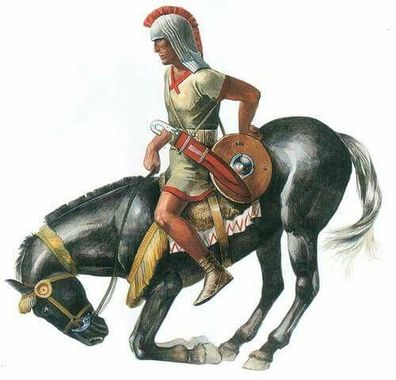
Necesito saber cuáles unidades usaban espada.
Ayer mientras jugaba en mi mod estaba viendo que no tienen caballería de espada ni de lanza, pero trae una de choque de dudosa procedencia.
-
 1
1
-
-
https://www.honga.net/totalwar/rome2/faction.php?l=en&v=rome2&f=rom_turdetani
It seems to me that horseback units are missing in the Iberians
Sword cavalry and spear cavalry.
The Lancer I don't know from what source you got it, it has no historical context.
-
I agree is heavy.
In Age of Empires DE 2 they are light, but have similar ranged attack to pikemen.
-
we can include someone from the gens Marcia?
Why? Because my name comes from that gens Marcio from Marcius.
https://en.m.wikipedia.org/wiki/Marcia_gens
The gens Marcia, occasionally written Martia, was one of the oldest and noblest houses at ancient Rome. They claimed descent from the second and fourth Roman Kings, and the first of the Marcii appearing in the history of the Republic would seem to have been patrician; but all of the families of the Marcii known in the later Republic were plebeian. The first to obtain the consulship was Gaius Marcius Rutilus in 357 BC, only a few years after the passage of the lex Licinia Sextia opened this office to the plebeians.
After this family, the next cognomen of the Marcii was Philippus, a Greek name, which first appears as the surname of Quintus Marcius, the consul of 281 BC; but this may anticipate the adoption of the name by his descendant, for a certain Lucius Marcius of this family is said to have had some connection with Philip V of Macedon; his son, Quintus Marcius Philippus, was consul in 186 BC, and it may therefore have been Lucius who was the first to obtain the cognomen. The initial cognomen of the family may have been Tremulus, since the filiations given in the Fasti link Quintus Marcius Tremulus, consul in 306, and his probable son Quintus Marcius Philippus, consul in 281. Philippus means "lover of horses", and the name had for centuries been associated with the Macedonian kings; Philip II was the father of Alexander the Great. So wide was the fame of this dynasty, that it is not entirely impossible that the name had reached Rome at an earlier date. The Philippi were proud of this association since Lucius Marcius Philippus, the consul of 91, even put the portrait of Philip V of Macedon on the denarii he minted.
Some members.
https://en.m.wikipedia.org/wiki/Lucius_Marcius_Philippus_(consul_91_BC)
First Plebian dictator
https://en.m.wikipedia.org/wiki/Gaius_Marcius_Rutilus
Consul
https://en.m.wikipedia.org/wiki/Lucius_Marcius_Censorinus_(consul_149_BC)
consul in 149 BC, the year of the Third Punic War. He was given command of the Roman fleet, and together with his colleague, Manius Manilius, laid siege to the city; but Marcius had to return to Rome to hold elections for the following year. He was censor in 147
https://en.m.wikipedia.org/wiki/Lucius_Marcius_Censorinus_(consul_39_BC)
-
 2
2
-
-
-
34 minutes ago, Ceres said:
Passersby interested in new historic names, please have a look there:
Historic Names list
They opened another topic to discuss that.
-
Origin.
The expansion of the horse, which began around 2000 BC in the Eurasian steppes, ended precisely in the Iberian Peninsula when two opposing currents and two opposing horses were mixed. Curiously, it was not Indo-European horses that first arrived in Hispania from the Pyrenees, but Berber horses.
In the 13th century BC several Berber tribes arrived in the south of the peninsula, bringing with them Libyan horses, i.e. a cross between the great Aryan horse and the hardy Mongolian horse, which therefore retained the predominant characteristics of the latter. All classical authors (Mela, Pliny, Silius, etc.) coincide in their description: great height (1.55 m), proportionate body, beautiful subconvex head and ugly haunches (due to its drooping croup, unknown at that time in Europe), resistant and very brave, qualities highly valued by the Romans, who preferred it to the Italic.
The primitive settlers of the southwestern peninsular developed a rich culture known only by the name of its capital, Tartessos. Their exploitation of the mineral deposits of Huelva and their wealth materialized in splendid gold jewelry attracted Phoenician traders who founded the colony of Gades (Cadiz) around 1000 BC. Later they would found other factories in Malaka (Malaga), Sexi (Adra), Ebussus (Ibiza) and Kart Hadash (Cartagena).
The Turdetans knew the war chariot, as demonstrated by the remains found in Toya (Jaén), the biga model of Santa Elena and the relief of Cigarralejo (Murcia).
Thanks to the good climatic conditions in the south of the peninsula, horses prospered rapidly, and their numbers increased notably thanks to the contribution of Numidian specimens during the Punic Wars. Although they shared origin and, therefore, genetic traits, having developed for a millennium in different habitats, the Turdetan had more class, greater volume, more strength, more agility and better aesthetics. After crossing with the convex specimens brought by the Vandals, and with hypermetric Danish specimens imported in the 16th century, it gave rise to a 1.60 m horse whose ultra-convex profile was fortunately and systematically modified through crosses with the rectilinear Arabian until the current Andalusian horse was obtained.
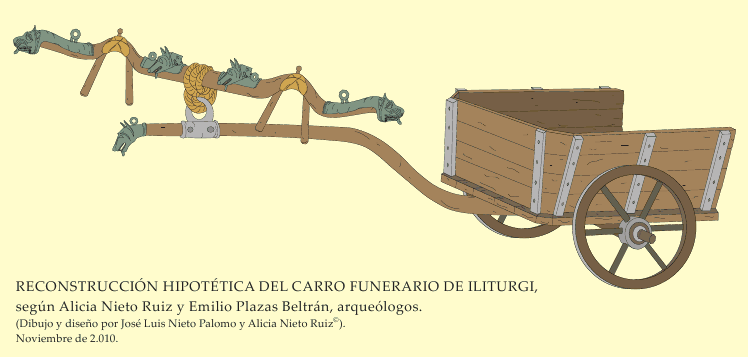
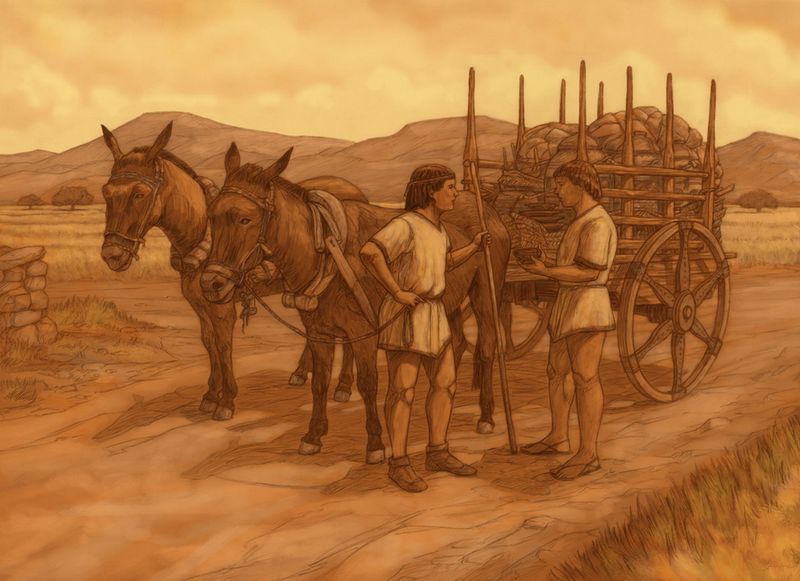
Levantine painting shows innumerable scenes of archers and horses, to the point that many historians, believing them to be contemporary to those of Altamira, consider the Iberian Peninsula to be the cradle of both. Those of the Sautuola shelter in Nerpio stand out for representing in great detail what Brodrick considers to be the typical Spanish occupation: the civil war. Among the equestrian ones, the horseman with Greek helmet of Gasulla (Castellón) stands out that, probably, it was not but the representation of a foreign warrior made by an astonished native, in a similar way to those made by the pre-Hispanic Patagonians.
The progressive knowledge of the Indo-European invasions and colonizations minimized the role of the Mediterranean substratum in the Iberian civilization, but today it is known that this was the result of a process of acculturation carried out by continuous contacts with Greek traders. They began to arrive around 575 BC to the coasts of Levante from Masilia, founding the commercial colonies of Emporium (Ampurias), Akra Leuke (Alicante) and Hemeroskopeion (Denia), with Cape La Nao as a natural border with the Phoenician-Carthaginian area of influence.
As with the Celtic, the Iberian does not respond to a differentiated ethnic concept, but only to a geographical area occupied by peoples with a common culture, differentiated from the Celtic of the northwest and the Turdetan of the south. In fact, they consumed their energies in fighting each other, which is why they were so easily conquered by the Carthaginians and Romans despite the courage they later showed as mercenaries of both.
Hired as mercenaries both by the Carthaginians and, later, by the Romans, the Iberians achieved well-deserved fame. The Iberian horseman wielded, not emblazoned, a round, small and somewhat concave shield called caetra, of Celtic origin, which was usually carried hanging on the horse's right back. At later dates it was replaced by the scutum, larger and circular in shape. The typical Iberian helmet was made of leather, but thanks to trade with Greece, Corinthian models with crescent crests or purple plumes were introduced, with or without cheeks. The scarce remains of metallic breastplates are of doubtful ascription, being more probable that they were made of leather.
The lance (soliferrum) was made of a single piece of metal with a hexagonal or rectangular section, but was not used by the horsemen as the stirrup was unknown. Instead, they used the javelin (falarica), which had a square section tip and a fir shaft three feet long, each warrior carrying a large number of them. Generally, they used them with flamed and flaming points to disorganize the enemy and force him to get rid of his shield after the first volley, putting him at a disadvantage in the melee. The sling was also widely used, especially in the Balearic Islands, but there is no record that it was used by horsemen.
However, the offensive weapon par excellence was the falcata, a saber with a single curved edge, long and sharpened tip, and a closed hilt with animalistic shapes. It is believed that it was brought to the West by the Etruscans and to Iberia by the Tartessians, although very similar pieces have also been found in Greece and Macedonia. They were built with iron pieces that would have resisted rust after being buried for two to three years. Secondarily, a short dagger (kopis), the double axe (bipennis) and throwing maces (cateia) were used. The large number of falcatas found shows that their use was widespread among the Iberians, with no difference in hierarchies.
The Iberian statuary presents notable examples of horsemen, highlighting the one from Bastida de Mogente (with a large crest), the two from the Coll de los Jardines and the three from the sanctuary of La Luz. In the sanctuary of Cigarralejo 56 statuettes of horses and 21 of mares with their foals have been found. They present complete bridles adorned with bangs, tassels and metal pieces, petral, reins, bits and the primitive Iberian saddle or ephippion, consisting of a simple leather, wool or vegetable fabric cover, held by a girth and, in many cases, with a pad on the withers to hold the reins and thus leave the hands free for combat. However, the Palencia rider offers the only representation of an authentic saddle from this period. Many bronze spurs have been found in Numancia, Sorba, Mataró, Archena, Jaén, etc., being well represented in the paintings of Liria. Thanks to the excavations of the Marquis of Cerralbo in Anguita, we know that horses were already shod in Hispania around the 4th century BC, while in the classical world this practice was not generalized until two hundred years later.
Celts.
The first European culture to enter the Iberian Peninsula was that of the Urn Fields, which spread through Catalonia around 1250 BC, apparently coming from Lausatia (Poland). There are no grave goods because the cremation rite was imposed, but in some deposits of weapons found in rivers appear short bronze swords with central ribbing and reed hilt, as well as helmets and shields that combined bronze with wood. Curiously, the settlements of this culture were mostly in valleys and lacked walls, which gives an idea of a more or less peaceful agricultural society.
Around 1050 BC the first tribes of the Hallstatt culture began to arrive, extending along the Atlantic coast up to the mouth of the Guadiana, where they made contact with the Tartessians. From then on they settled in forts located in places of easy defense and with walls disproportionate to the number of dwellings. To protect themselves from enemy cavalry they had a moat and a surface of driven stones. All this gives an idea that their settlement was not peaceful or that their tribes fought against each other for the possession of the land. Strabo defined them as
mountain people accustomed to banditry, sober, with long hair that they girded with diadems to fight, they bathed in the cold water of rivers and lakes that they navigated with their leather skiffs, they drank beer and fed on goat meat.
Their most characteristic weapons would be the heel axe and an iron sword, of about 40 cm, with hilt in the form of antenna. From 750 BC they were replaced by the long swords of the La Téne type, manufactured with such a perfected technique that the Roman legionaries copied them for their gladius hispaniensis. The knives have a blunted back. The typical shield was concave of leather and braided ribs, circular in shape and with a convex metallic umbo in the center, rings and clamps. According to Strabo, they used a helmet with three crests but, in the end, the European pointed helmet prevailed.
The Celts brought with them their chariots pulled by ponies, of smaller height but very resistant to fatigue. They were ellipometric horses (1.25 m tall), with small, flat heads, short ears, strong croup, abundant hair, long manes, dark brown coats and no mirrors on the hindquarters (like donkeys). Its most genuine descendants are the Basque-Navarrese jaca and the Asturcón. They spread along the Cantabrian coast and all the Atlantic coast up to the mouth of the Betis (Guadalquivir). The stelae from Extremadura and Portugal reproduce Celtic chariots, generally with four wheels, open at the back and with a lance for two horses. As in Scandinavia and Eastern Europe, the spoked wheel is reserved for the war chariot, while the transport wagon retains the solid ones.
Epona was also venerated in Spain, as attested by an inscription on the front of the church of Paramio (Zamora) which reads: DVERIA EPPONE RITIS, possibly from the second century AD, and which could refer to the contributions that the people of the lands of the Duero had to make to pay for the rites in honor of the goddess. This inscription has the particularity that it presents the name of the goddess with a double P, which does not happen with other inscriptions in the Iberian Peninsula.
Roman Hispania.
In 1908, the act of granting citizenship to a group of Iberian horsemen for their valiant performance in the battle of Asculum against the Marsos (89 BC) was discovered in the Capitol.
Other Hispanic contingents served in Britannia, Pannonia, Noricum, Illyria, Dacia, Syria, Cappadocia, Palestine, Egypt, Cyrenaica and Mauretania, at the rate of about 7,000 recruits per year. More than a hundred cohorts and numerous alae bore ethnic names of Celtic peoples, while the Turdetans and Iberians, more Romanized, were directly included in the legions. Numerous funerary stelae scattered throughout the Old World recall these unknown Hispanic soldiers who watered distant battlefields with their blood.
Many of them achieved fame and fortune although, in numerous occasions, they also served as hostages to avoid the uprising of their towns of origin. Although according to Polybius they were especially valuable in the guerrilla and in the skirmish, when the legion was in difficulties they did not hesitate to put foot to earth and to fight next to the infantry, like primitive dragoons.
It is especially interesting a fragment of the Tactics of the Greek Arrian about an equestrian exercise practiced by the Cantabrian horsemen and that was known in Rome as Cantabricus Impetus. It deserved the praise of Hadrian in a harangue to praise the Cohors II Hispaniorum Equitata, encamped in Numidia. Arrian describes two squadrons armed with javelins advancing in a line in opposite directions until they formed a circle. From there each rider was to throw his javelin at the center of the opposing shield, without wounding either the rider or the horse. In this first exercise known as "real fire", not only the skill of the throw was rewarded, but also the serenity of the person who received the impact.
As a result of the mixture between the Libyan and Celtic horses, another one called celdón or fieldón was produced. Of intermediate height (1.40 m), it used to be shod and corded, with a large head, subconvex profile, narrow chest, large hooves, very resistant and apt for draught, especially for its tendency to the carrying or walking gait (trepidarii). From the Meseta it was exported to the Italian circuses, displacing the Cisalpine horses in chariot races. Sometimes confused with the asturcón because the Romans believed them to come from Astúrica, its most direct representative would be the Galician jaca (not to be confused with the homonymous pony). Donkey and mule cattle were also important during the Roman period, with Menorcan hinnies standing out for their quality, size and strength.
The embouchures used at that time in the peninsula were very similar to the current ones of fillet and sticks. There have also been found some "flavored" that refreshed the mouth and stimulated salivation, highlighting the one found in Almedinilla (Córdoba) currently in the Archaeological Museum of Madrid. From the Roman period, the beds in the shape of an openwork wheel with a diameter of 55 mm, decorated with legends and crowned by a trapezoidal ring for fastening to the head are outstanding, especially those found in Fontaneda (Portugal) and Pedrosa de la Vega (Palencia).
Source:
http://caballipedia.es/La_caballería_en_la_Hispania_antigua
-
 2
2
-
-
Macedonian.
In the Macedonian army of Philip II and Alexander the Great, the cavalry unit termed the prodromoi carried skirmishing equipment for scouting and outpost duties, however, the cavalrymen of this unit are sometimes referred to as sarissophoroi, "pikemen" or "lancers", which leads to the conclusion that they were sometimes armed with an uncommonly long xyston (believed to be 14 ft long), though certainly not an infantry pike (sarissa). They acted as scouts reconnoitring in front of the army when it was on the march. In battle, they were used in a shock role to protect the right flank of the Companion cavalry. Persian light cavalry took over scouting duties when they became available to the Macedonian army following Gaugamela; the prodromoi then assumed a purely battlefield role as shock cavalry. Four ilai, each 150 strong, of prodromoi operated with Alexander's army in Asia.[4]
At Gaugamela, the prodromoi under Aretes were responsible for finally routing the Persian left wing cavalry, winning the battle in this sector.[5]
In the primary sources Arrian mentions that Aretes commanded the prodromoi, in the same context Curtius says that Aretes commanded the sarissophoroi. It would appear that the same unit of cavalry was known by both names.[6] It is possible that the term prodromoi was used in two different ways in the primary sources. Firstly, to indicate a particular unit, the prodromoi/sarissophoroi, and secondly, for cavalry of any type engaged in detached scouting duties.[7]
The xyston (Ancient Greek: ξυστόν "spear, javelin; pointed or spiked stick, goad (lit. 'shaved')"), a derivative of the verb ξύω "scrape, shave", was a type of a long thrusting spear in ancient Greece. It measured about 3.5–4.25 meters (11.5–13.9 ft) long and was probably held by the cavalryman with both hands, although the depiction of Alexander the Great's xyston on the Alexander Mosaic in Pompeii (see figure), suggests that it could also be used single handed. It had a wooden shaft and a spear-point at both ends. Possible reasons for the secondary spear-tip were that it acted partly as a counterweight and also served as a backup in case the xyston was broken in action. The xyston is usually mentioned in context with the hetairoi (ἑταῖροι), the cavalry forces of ancient Macedon. After Alexander the Great's death, the hetairoi were named xystophoroi (ξυστοφόροι, "spear-bearers") because of their use of the xyston lance.
The xyston was wielded either underarm or overarm, presumably as a matter of personal preference. It was also known, especially later, as the kontos; meaning literally "barge-pole"; the name possibly originated as a slang term for the weapon.
The xyston was wielded either underarm or overarm, presumably as a matter of personal preference. It was also known, especially later, as the kontos; meaning literally "barge-pole"; the name possibly originated as a slang term for the weapon.
The spear was a two-handed weapon.[1] It was held at the midpoint of the wooden shaft, instead of a typical lance, which was held just beyond that and this was due to the heavier weight of the spear.[4] Holding it in the middle required the soldier to have more control of his hold. Macedonian soldiers, when on extra-combat missions, would not use the spear in close confrontations, they would use a javelin.[1] The spear, being too long would prevent speed and would be a nuisance, in the case of any sudden fighting that took place
-
One thing that sets them apart in the game is their weapon.
In the case of the Iranian peoples:
The kontos (Greek: κοντός) was the Greek name for a type of long wooden cavalry lance used by the Iranians, especially Achaemenid successors' cavalry, most notably cataphracts (Grivpanvar). It was also used by the Germanic warriors of the south as a pike. A shift in the terminology used to describe Sarmatian weapons indicates the kontos was developed in the early to mid 1st century AD from shorter spear-type weapons[citation needed] (which were described using the generic terms for "spear"—longhe or hasta—by Greek and Roman sources, respectively), though such a description may have existed before the Battle of Carrhae, in which Parthian cataphracts, in conjunction with light horse archers, annihilated a Roman army of over three times their numbers.
As shown by contemporary artwork, the kontos was about 4 metres long, though longer examples may have existed; later Parthian and Sassanian clibanarii (Middle Persian: Grivpanvar) reportedly used kontoi of longer lengths; only highly trained cavalrymen such as those fielded by the Arsaco-Sassanian dynasties could have used such weapons. It was reputedly a weapon of great power compared to other cavalry weapon of its time, described by Plutarch as being "heavy with steel" and capable of impaling two men at once. Its length was probably the origin of its name, as the word kontos could also mean "oar" or "barge-pole" in Greek. Thus, it had to be wielded with two hands while directing the horse using the knees; this made it a specialist weapon that required a lot of training and good horsemanship to use. In addition, most Parthian cavalry (even possibly including cataphracts) carried bows, so this meant daily practice with the weapons.
-
-
2 hours ago, ChronA said:
I haven't been able to try out this feature until now... but DEAR GOD!!! Did no one test this thing?! Units have effectively no collision now, and that's saying something because they never had very much to begin with.
This is what 200 units looks like. And they can even move like this. I assume you are familiar with the term death ball, well this is practically a death black hole.
I was realizing that yesterday that I couldn't move a citizen.
-
28 minutes ago, LetswaveaBook said:
As a practical example, slowing down turn rates in a24 did not change the fact that having camels in p1 gives you an automatic win if your opponent doesn't have the correct counter unit (archers or spear cav) because other units simply can't close the range gap before they die.
Good idea for make experiments.
-
-
As I understand this type of tactics was developed by nomadic tribes.
At some point Alexander commanded a similar type of troop.
History
A lancer was a type of cavalryman who fought with a lance. Lances were used for mounted warfare in Assyria as early as 700 BC and subsequently by Persia, India, Egypt, China, Greece, and Rome.[1] The weapon was widely used throughout Europe and Asia during the Middle Ages and the Renaissance by heavy cavalry, before being adopted later on by light cavalry. In a modern context, a lancer regiment usually denotes an armoured unit.
The Companions (Greek: ἑταῖροι [heˈtairoi̯], hetairoi) were the elite cavalry of the Macedonian army from the time of king Philip II of Macedon, achieved their greatest prestige under Alexander the Great, and have been regarded as the first or among the first shock cavalry used in Europe.[1] Chosen Companions, or Hetairoi, formed the elite guard of the king (Somatophylakes).
Companion cavalry would ride the best horses, and receive the best weaponry available. In Alexander's day, each carried a xyston (long thrusting spear), and wore a bronze muscle cuirass or linothorax, shoulder guards and Boeotian helmets, but bore no shield.[4] A kopis (curved slashing sword) or xiphos (cut and thrust sword) was also carried for close combat, should the xyston be lost or broken.
The Companion cavalry of the Diadochoi (Alexandrian successor-states), were even more heavily equipped. Seleucid Companions were noted to have worn lighter, but not otherwise dissimilar, equipment to the cataphracts at the Battle of Magnesia in 190 BC, which may have included partial horse armour and leg and arm protection. Ptolemaic Companions and Antigonid Companions were also equipped with a large round aspis cavalry shield unlike the Companions of Phillip and Alexander.
‘Companions’ was a title not used by the Seleucids in its original sense. It was replaced with different and various grades of ‘Kings Friends'. However, the title 'Companions' was kept as a regimental one. There was only one regiment or unit that held the title of Companions in the entire Hellenistic world though; the Antigonids and Ptolemies had different names for their elite cavalry regiments.
How you see us is not the same as the Roman cavalry, or the previous classic Greek cavalry.
However, the defeat of Roman legions by Parthian horse archers at Carrhae in western Mesopotamia in 53 BCE marked merely a shifting of boundaries between ecospheres on topographical grounds…
The first use of couched lances was in the 6th century B.C. It is unclear whether the Scythians or the Massagetae were the first to develop the tactics.
Iranian tribes such as the Massagetae were believed to be the originator of the class of heavy cavalry known as cataphract. During the time of Achaemenid Persia cavalry was the elite arm of service (as was the case in most civilizations), and many Persian horsemen such as the bodyguard unit of Cyrus the Younger were rather heavily armoured by the standards of the era. By the time of Alexander's invasion cataphract units with both men and beasts being fully encased in armour were already in use by the Persians.
-
I'm seeing that spear cav is countering other cavalry. Should counter archer and skirmishers.
1.5 Vs archer
1.2 vs Skirmishers
On the other hand, there is no temple beats just for Lancer, the Lancer is basically the version of the Pikeman on horseback.
Alexander's cavalry was of this type. Certain Iranian (Persian) cavalry, and especially the Cataphracts from Seleucids.
If the r bet is no. It means that you have to make a list.
-
5 hours ago, Thorfinn the Shallow Minded said:
which would add yet another variable into the equation
there are many variables that are yet to appear in the form of features.
How about a test with units of range
Hoplites and slingers vs Swordmen Hastati+ skirmishers.
-
-
4 minutes ago, wowgetoffyourcellphone said:
Are you arguing just to argue?
nope.
I'm just saying that a forest is not a reason for lack of space.
-
What I do see as necessary is more berry bushes and a reproducible population of animals, but like in Empire Earth they do not exceed the map's limit number.
-
20 minutes ago, wowgetoffyourcellphone said:
No one is saying forests should cover half of the map, so you can rest assured.
Currently "forests" are about the size of a clump of trees. Was thinking just doubling or tripling their size, which if the map has the same number of trees means more building room for players.
they end up being cut down and that's it, so you make space. The idea is not to be a kind of black forest the whole map either.


.thumb.png.ce58cea22940c255f5b0a735d5abee36.png)

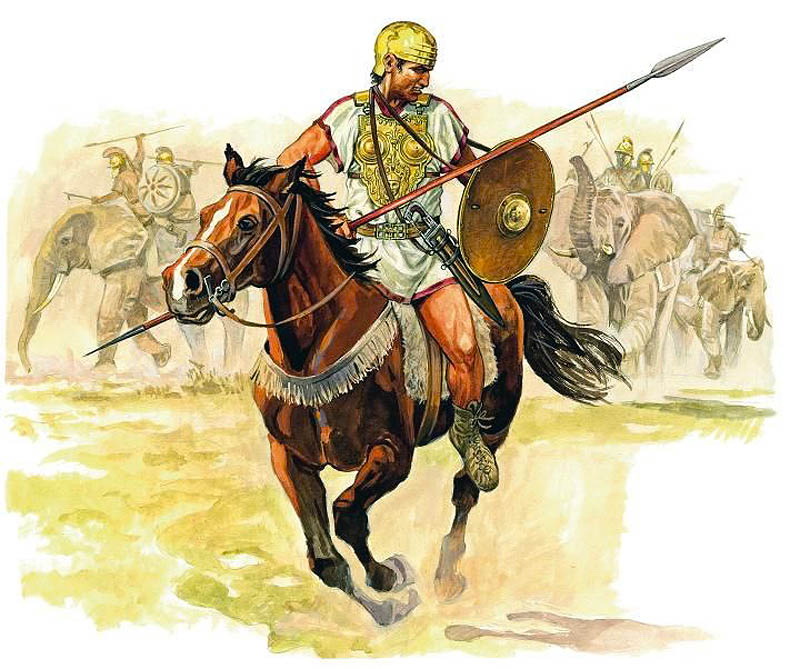
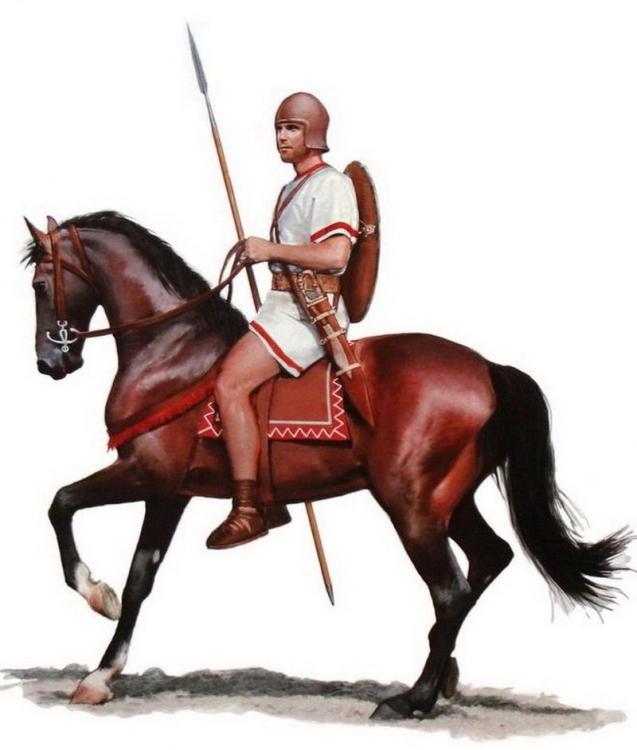
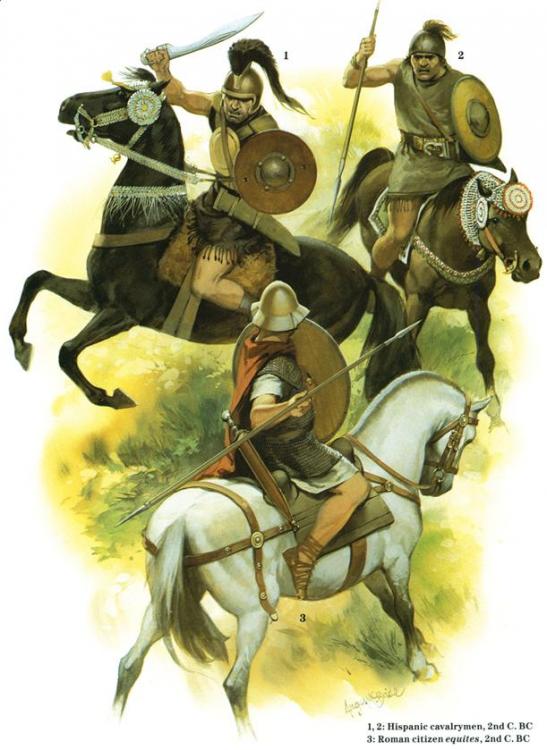
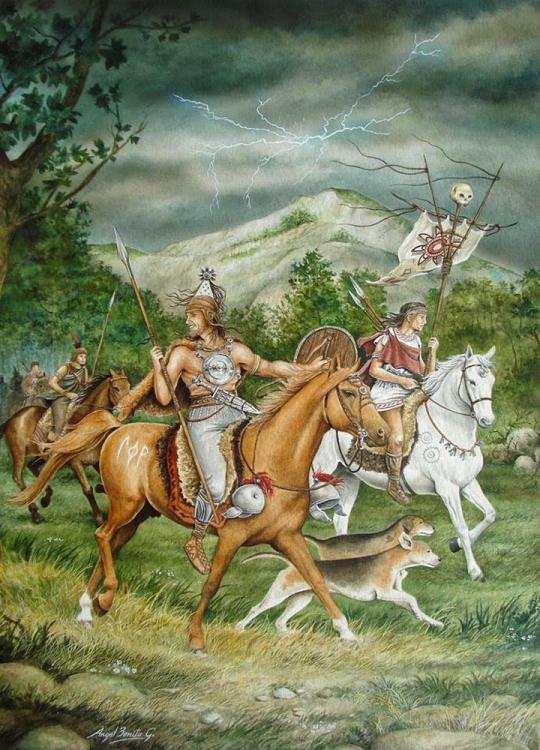
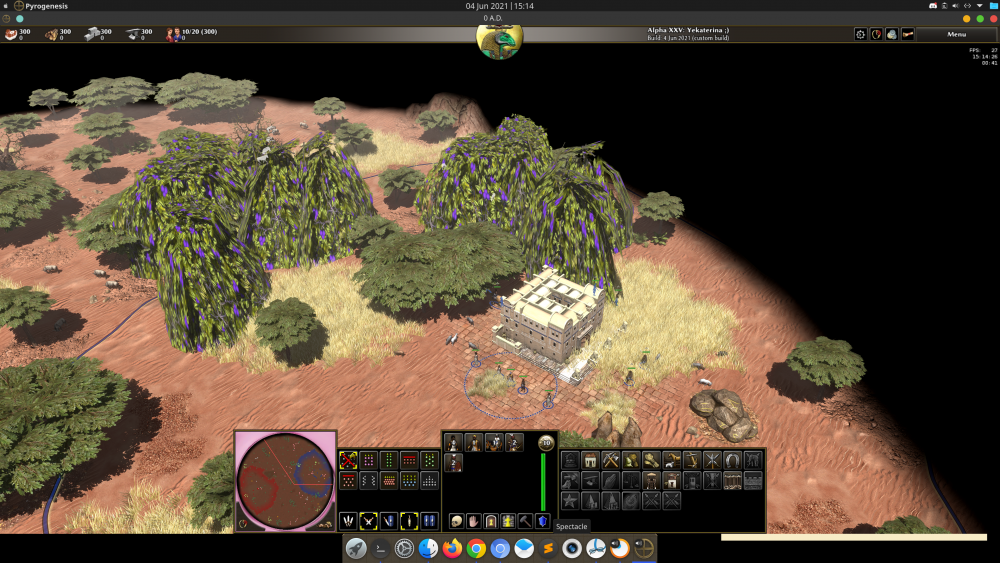



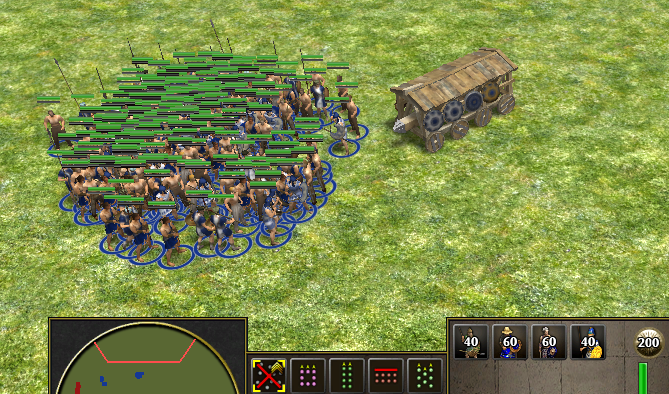
Cavalry in ancient Hispania
in Tutorials, references and art help
Posted · Edited by Lion.Kanzen
the celtiberan cavalry was used and even used heavy infantry shields.
https://europabarbarorum.fandom.com/wiki/Iberi_Equites_Scutarii_(Iberian_Medium_Cavalry)